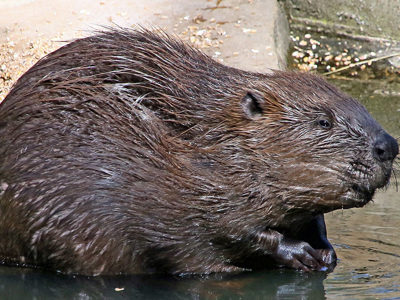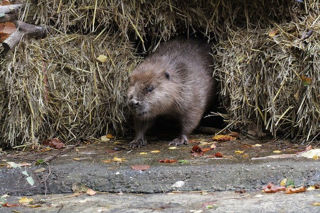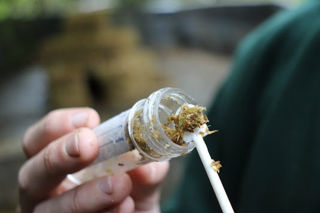
Historic day as beavers get protected status
1st May 2019

Wildwood Trust has been supporting the reintroduction of beavers back to the UK since 1999 when our charity pioneered the first beaver release into the UK in conjunction with Kent Wildlife Trust. Wildwood Trust has since supplied a number of genetically diverse and health screened beavers to sites in Scotland. Beavers were first introduced to Knapdale Forest in April 2009 through the Scottish Beaver Trial. After 10 years of unregulated culling, law-makers have now recognised the ecological benefits of the beaver reintroduction, including increasing biodiversity and reducing flood risk.

Peter Smith, Wildwood Trust Director said:
"Today is a momentous day as beavers get full legal protection in Scotland. Wildwood has worked for over 20 years with groups to make this happen. Our friends in the Scottish Wild Beaver Group have shown what a small band of dedicated activists can achieve with hard work and determination. A proud day to celebrate the wonders of beavers - time to take stock and redouble efforts to protect beavers in England!"
WHY ARE BEAVER SO IMPORTANT TO US
As busy as a Beaver is not an idol term, beaver are a “keystone species” which means beaver act as a natural nature reserve wardens, managing and protecting their surrounding habitat. Their skills as foresters and ecosystem engineers can create and sustain standing water and wetlands that increase biodiversity, purify water and prevent large-scale flooding.Scientist estimate that in America restoring only 3% of the original, beaver created, wetlands might suffice to prevent catastrophic floods; the same could be true for the UK and beaver could prove to be the best solution to the threat of large scale flooding due to climate change.
Beavers can also save the taxpayer money; a study published in 2007 by the WildCRU consultancy at Oxford University has concluded that the benefit of beaver reintroduction would substantially outweigh likely costs. Sponsored by the Wild Britain initiative, this report examined evidence from several countries across Europe where beaver have recolonised their former territories over the last 60 years.
Substantial benefits could accrue to the tourism industry, particularly for local communities, with further less quantifiable gains from effects on flood mitigation and water retention – both likely to be key features of future land use policy as climate change gathers momentum.
After learning from the many European successes in reintroducing beavers, Kent Wildlife Trust & the Wildwood Trust decided that European Beaver were the best hope to restore the fragile wetland habitat of Ham Fen in Kent. Now Wildwood hopes to recreate the success of this project on a much larger scale by reintroducing beavers to a river system in Wales as part of The Welsh Beaver Project.
This ambitious project is only possible thanks to Government own advisers who have come down on the side of beaver and have recommended that they should be reintroduced to the UK, Scottish Natural History’s director of science, Colin Galbraith, said:
“More than 20 other countries, including France, Germany and Denmark have reintroduced beavers and the experience has been very positive. Beavers fit into the landscape very well and in places like Brittany they have become part of the environment, with minimal damage to agriculture and other interests. Beaver dams would improve water quality, produce new habitats for fish and help reduce flooding downstream.”
